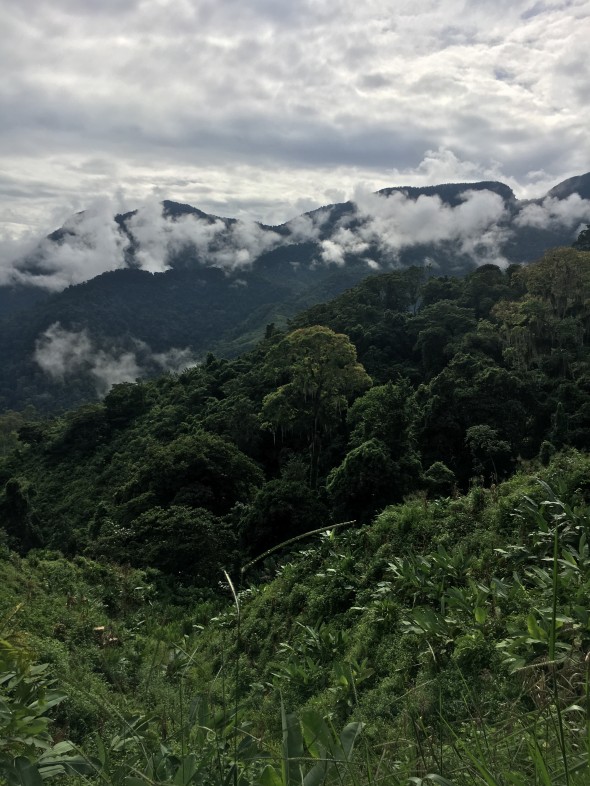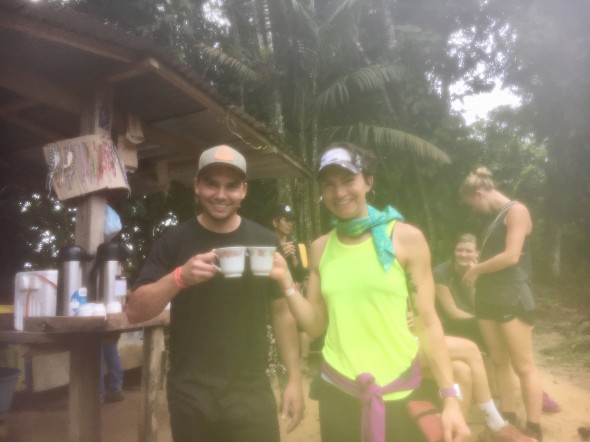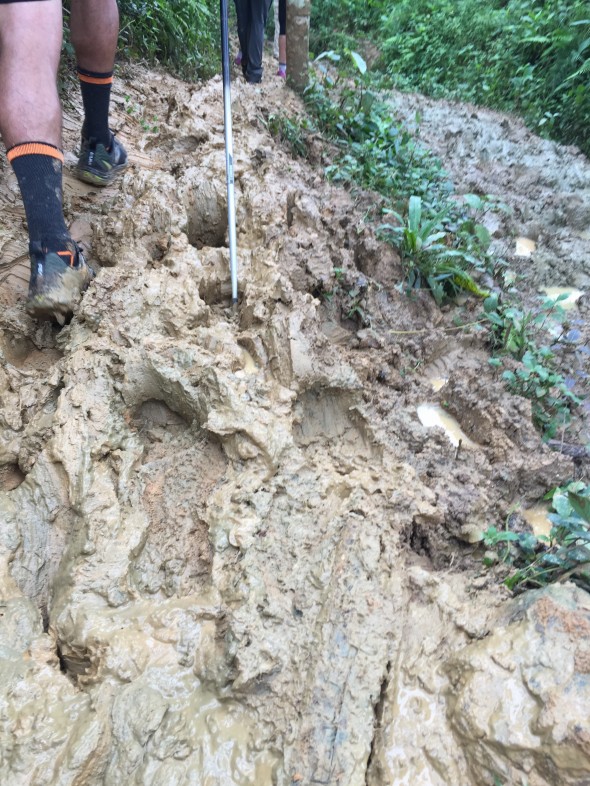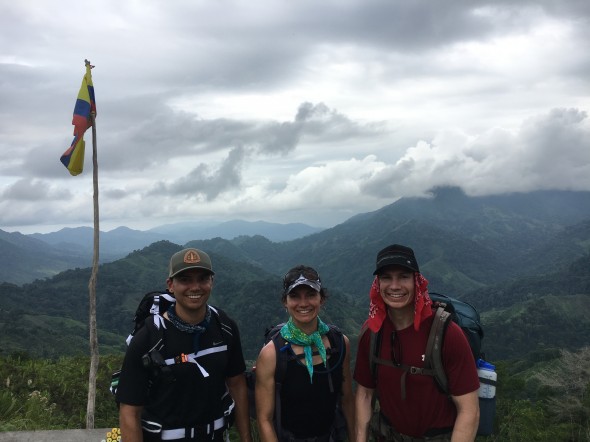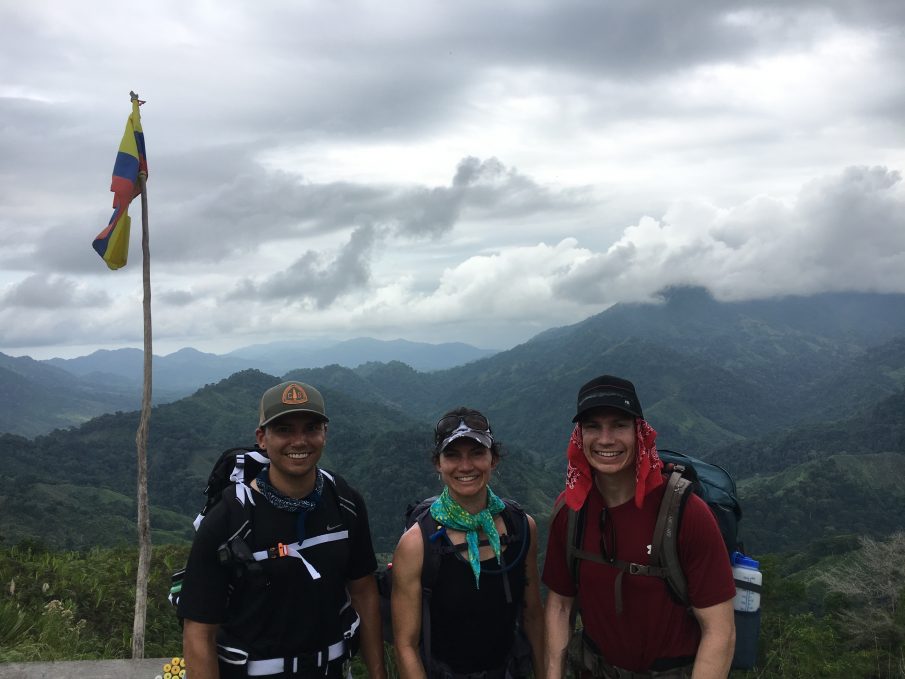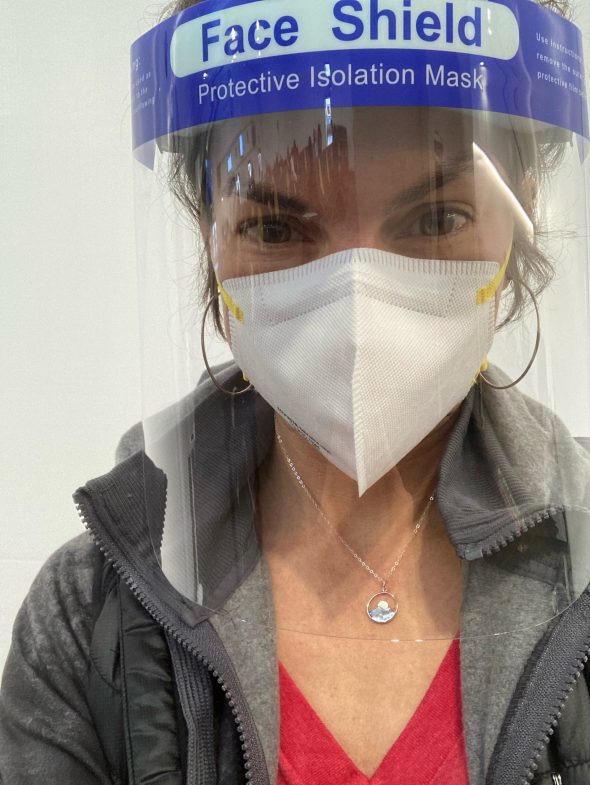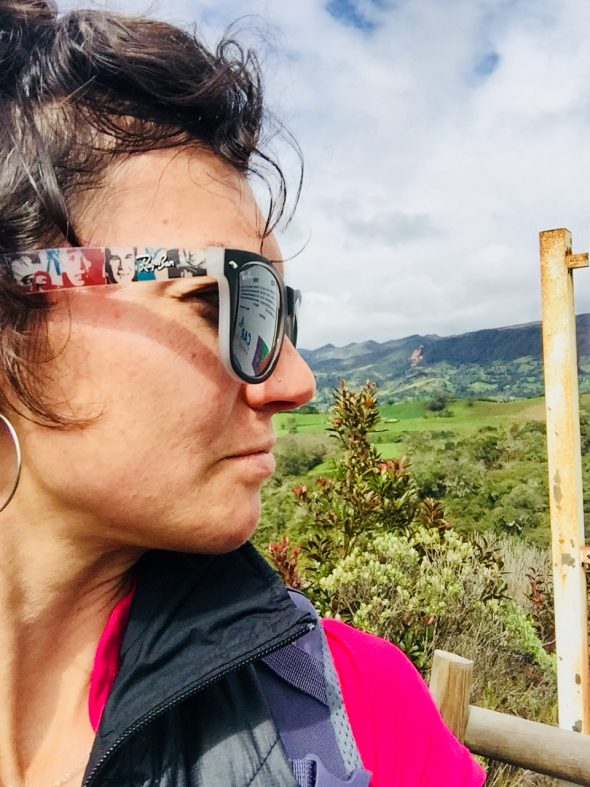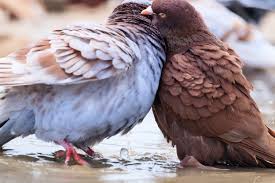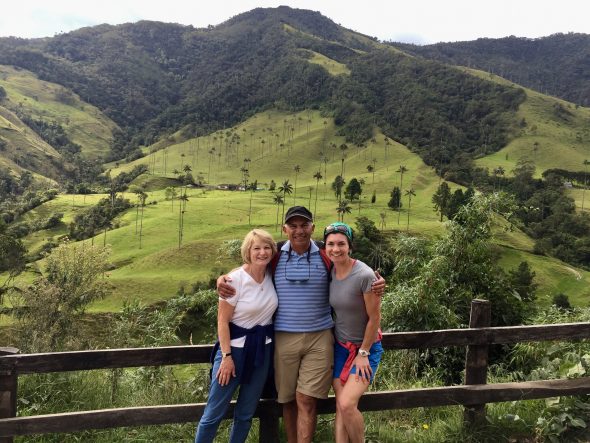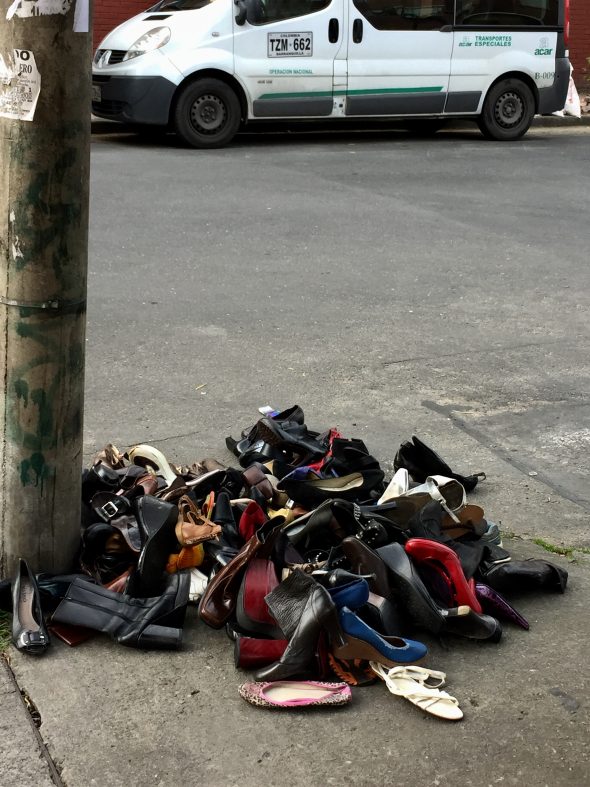I just returned from a backpacking trip with my two brothers. It was fabulous that they made the time and effort to come to Colombia to visit me. I’m thrilled to have been able to share a bit of my Colombian life with my immediate family (my parents were here in August)!
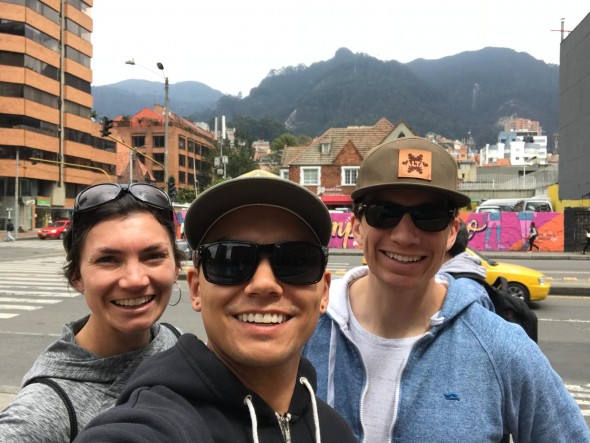
From a word-of-mouth recommendation, I booked a 4-day trip in Parque Tayrona (a national park which includes indigenous land of four different groups of people). The trek’s destination is called Ciudad Perdida (the Lost City). To do a multi-day hike and utilize the campgrounds within the park, you must go with a guide. There are 4 different companies who provide these guides and tours, and ours was called Expotur.
The mileage isn’t very lengthy each day, but the terrain is difficult – it’s jungle, there are many steep ups & downs, and it’s very humid. When there is cloud cover it’s ok, but when the sun shines directly it’s very hot. And then there’s the rain. There’s a reason it’s so so green here with dense growth and rapid re-growth; it rains a lot. And October-November is rainy season. So all in all, the route & conditions were challenging.
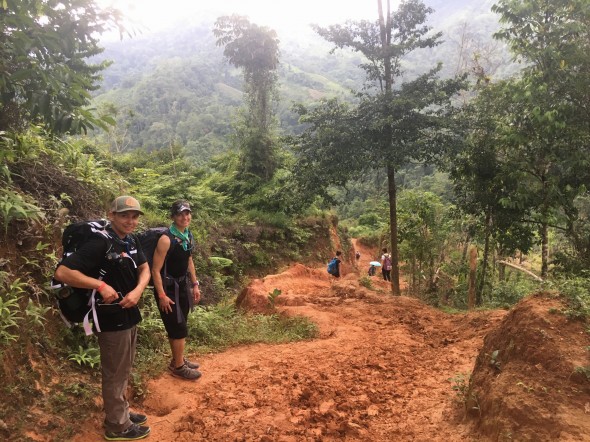
There were two groups of 16 trekkers which was slightly disappointing because it was more people than I had expected to share in this experience with us, but it turned out fine. We learned that in the high season (Dec-Jan and April-May) that the camps and trails are much more crowded. So we put up with more rain but have less crowds, a typical trade. The four companies share the trails, camps, and resources very well and this contributed to an enjoyable experience even though there were more people around than I had anticipated. The first evening when we all arrived to the camp and were shown the showers and the bunks, it felt like summer camp and I was bummed to think my brothers and I had signed up for some kind of cookie cutter group trip to see the local ruins. But, this turned out not to be the case at all.
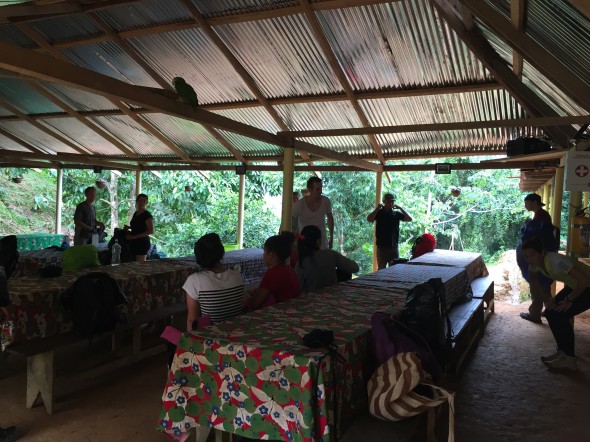
In 2006 the Colombian government partnered with locals and indigenous tribes/clans to create tourism organizations in order to provide income for its residents so that they would be able to stay on their land securely. This has a long backstory of drug cultivation and sales which lead to fighting, violence, guerrilla groups, and instability in the land.
As I came to know more about the history, structure and intent of these guided trips, I was able to more fully appreciate the way the tour was run and even when it felt summer-camp-ish, I understood that this was one of the best, if not only, ways of seeing this part of the jungle including a present-day functioning sacred site and witnessing the dynamic of eco-tourism and indigenous realities.
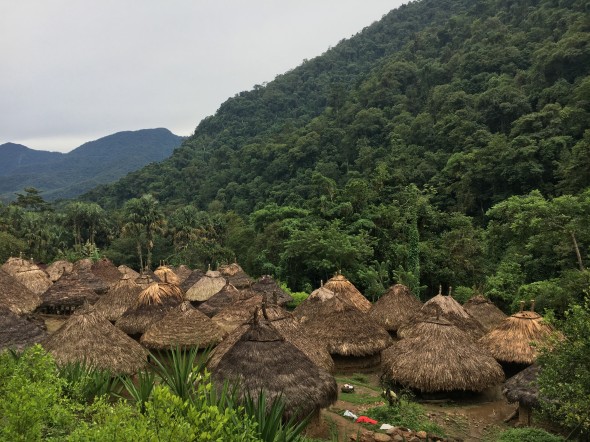
The camps are shelters with a kitchen, many long tables, bathrooms, bunks, and lines for hanging wet clothes. It was very organized, and the food was great, including well-timed snacks and rest stops. The guides spoke Spanish but there was an English interpreter along as well. Our guide, Camacho, told us a lot of information along the way about the indigenous groups and some of their traditions and ways of living. On the first night after dinner, he gave us some history and context about Colombia’s past. He spoke about the growth & sales of marijuana and cocaine, corruption, the FARC, and devastation for many native people. In 2006, the Colombian government along with native people began the natural tourism industry as a way to reduce drug traffic, keep people in their own land with more safety and more opportunity to make an income. His talk was really interesting to me, and helped me better understand some of the reasons why access to nature here seems less developed than in the US, and perhaps what I would expect it to be here due to all the natural resources & beauty that exist.
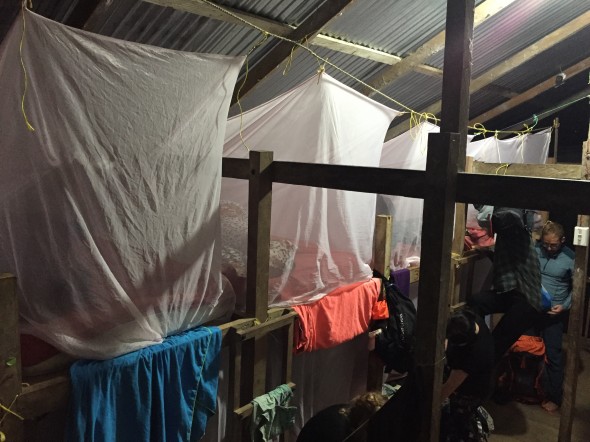
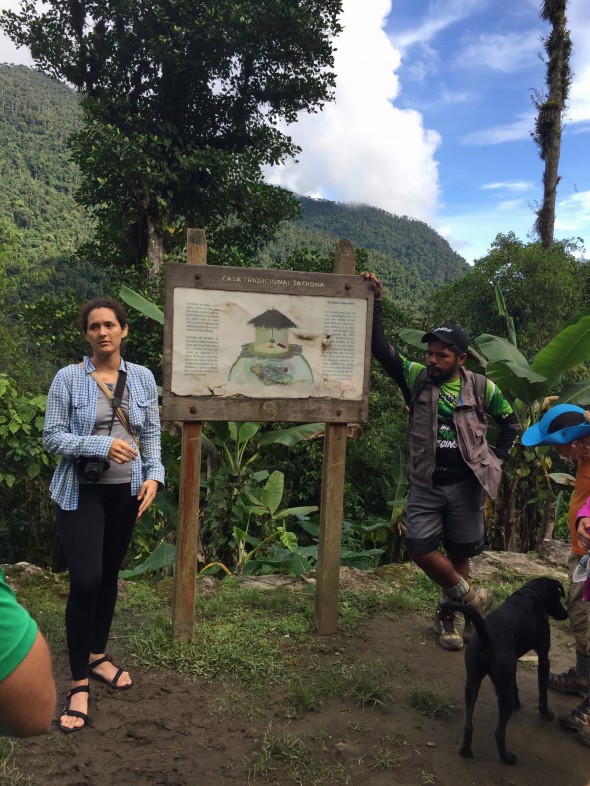
Jeff and Jay and I had a great time together, no matter how many other people were around us at any given time. We took lots of photos, joked, enjoyed food and time together. We each find a lot of value and enjoyment in making time to spend as a small group; it’s not always the case that three siblings in their 30s have lives which allow them to coordinate trips sans family or other obligations for 9 days or even a long weekend. I’m very thankful for my hermanos and that they both value our friendships as much as they do to make this kind of effort.
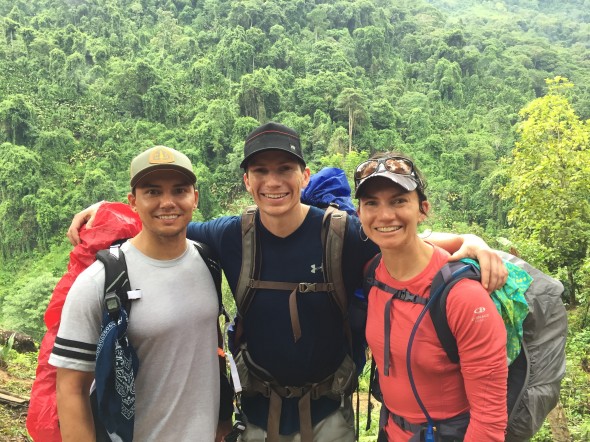
—————-
For the trekking trip, we flew into and out of Santa Marta from Bogotá; a 90 minute flight. Jeff and Jay had come a few days prior to the backpacking so we did get to experience a little of Bogotá together as well. We ate at the infamous Andres Carne de Res, went to a small local salsa venue, participated in Ciclovia, took the Bogota Graffitti Tour, and ate Colombian food for many meals.
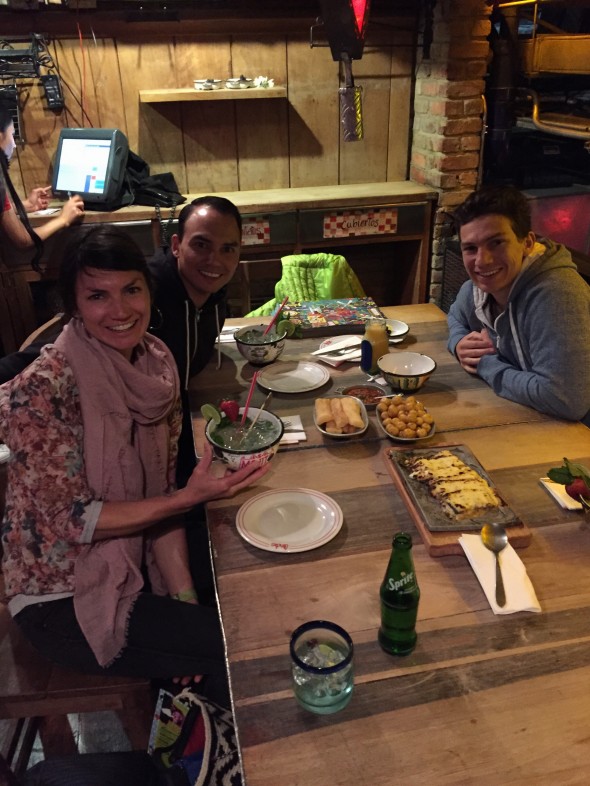
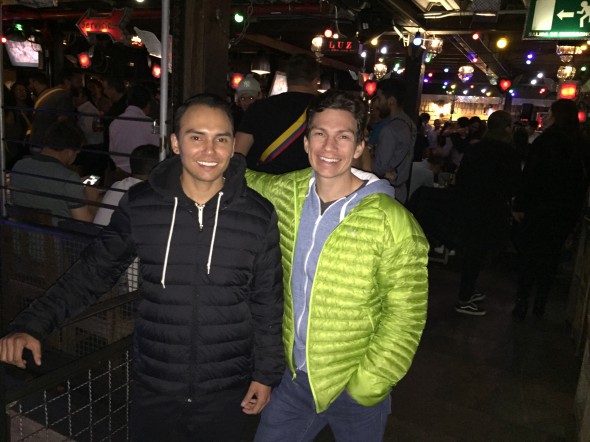
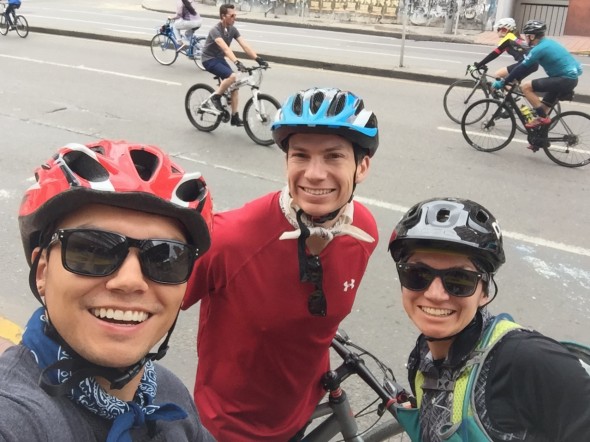
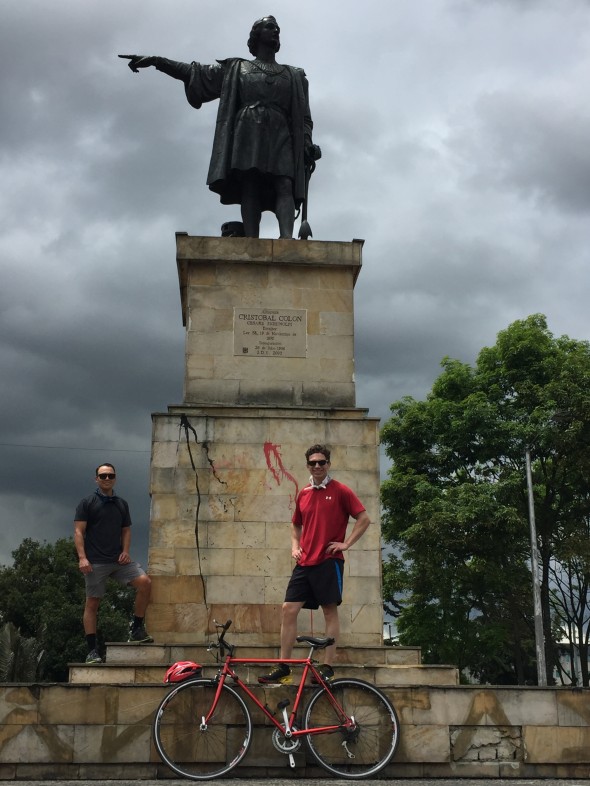
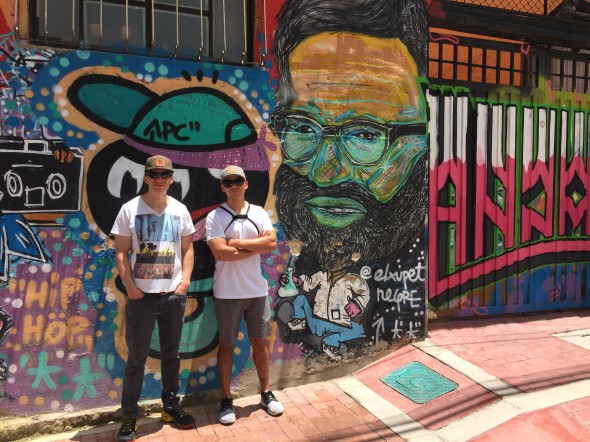
———
The trekking group might have been a little more intimate, the weather a little less humid, the rain a little less heavy, and some of the participants a little less…annoying, but we made the most of it and really enjoyed and learned a lot as we pushed our bodies within the vast, dense landscape of northern Colombia. I’d go just about anywhere with these guys!
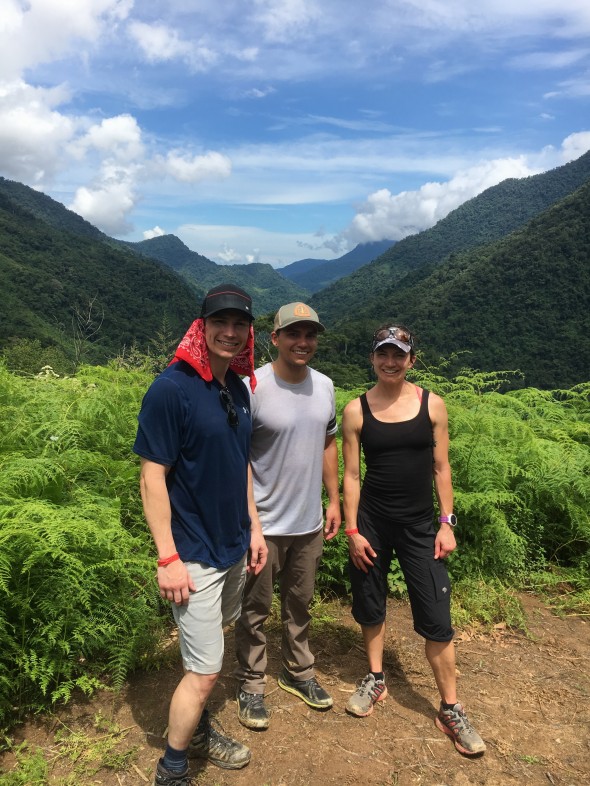
Day 1 – lunch then 3 hour hike to Camp 1, arriving just before some heavy rain that lasted all night. Dinner was mojarra (traditional fried whole fish) with excellent sides such as beans and patacones (fried plantains).
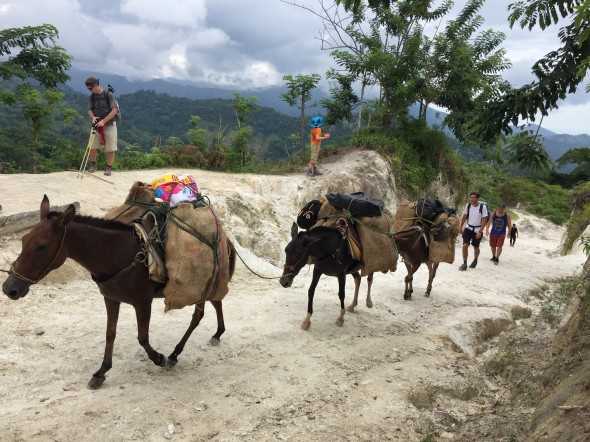
Day 2 – 5am wake-up, 6am departure, hiked 3.5 hours to a break where we swam in the river and ate lunch, then continued on for about 3.5 more hours to Camp 2 which was just outside La Ciudad Perdida. This was a long, challenging day and we were lucky to have no rain at all but the heat and humidity along with some big climbs and a river crossing made for plenty of challenge.
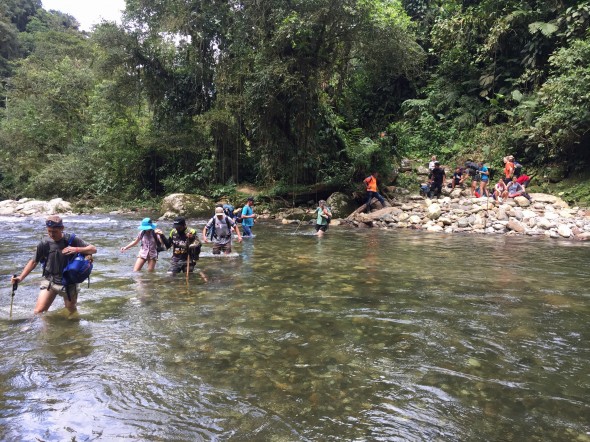
Day 3 – 5am wake-up, 6am departure, hiked only about a half hour until another river crossing (this one deeper) and 1200 stair steps up to La Ciudad Perdida! Camacho gave a thorough explanation and history of the 4 indigenous groups in the Sierra Nevadas and how things work between these groups and tourism. We were lucky to meet the esteemed spiritual leader (“el Mamo”) who currently lives in La Ciudad (he and his family are the only inhabitants), and take some photos of his doll-looking grandchildren. We spent about 3 hours total walking around, resting and listening to Camacho give us information about this special site. Then we headed back down the 1200 steps, across the river, and back to a camp for a delicious lunch of soup, rice and chicken. As we finished lunch it began to rain, but we didn’t wait it out, that likely isn’t possible and the experienced guides know it. So we geared up and headed out into it..for a short while it appeared to lessen, but then picked right back up again and with more strength. As rain-geared as we were, we became soaked, mud-ridden, and overall weary. We took fewer breaks and after almost 3 hours we arrived at our Camp 3. Everything was a mess and it was hard to get organized due to the mud and the rain, but we eventually all got showered up, drank some good strong coffee, played some rounds of HangMan to entertain ourselves under the covered long tables where dinner was later served: pork, mashed potatoes (I don’t commonly find this among Colombian dishes), roasted beets and carrots, and the common sweet beverage Aquapanela.
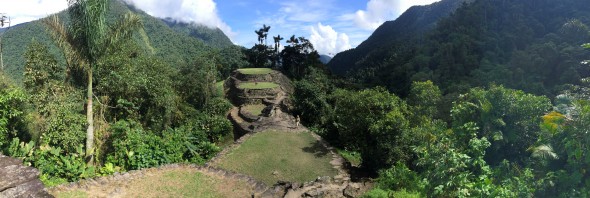
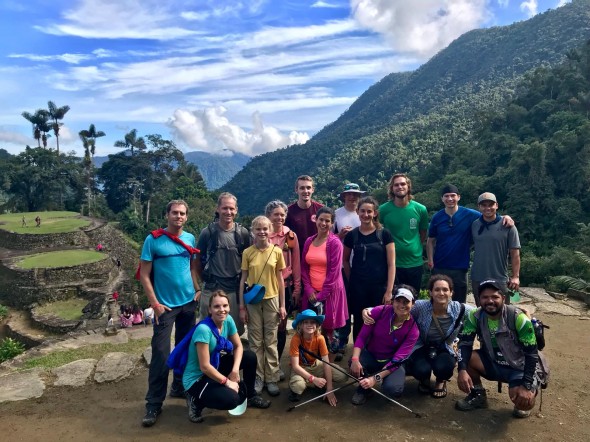
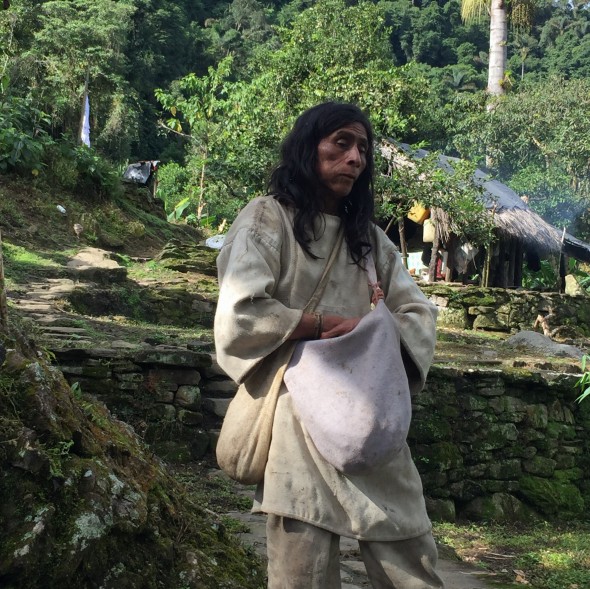
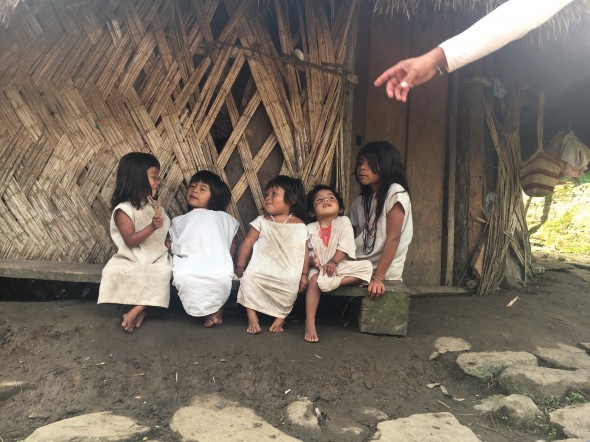
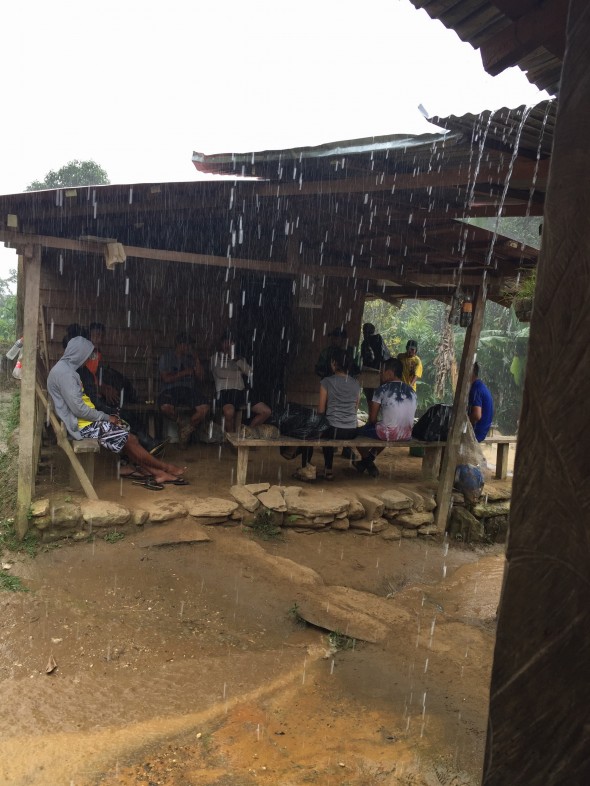
Day 4 – guess what time our wake-up call and departure were…yaaaawn… We were in the swing of the routine of early rising, breakfast, and packing up all our damp/sweaty items by now. The trip had been excellent but by this last day we were ready to see the end of the trail back in the town where we had begun. The climate and the terrain had been challenging! We hiked about 10 miles this final day, and ended in town around noon. They fed us one last tasty home-cooked Colombian meal before we all piled into jeeps that took us back to Santa Marta (about 2.5 hours).
